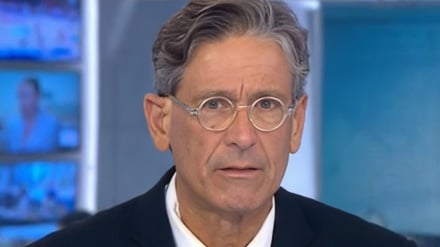Downside risks abound for Vietnam’s 2020 economy
Vietnam’s Communist Party leaders could be excused if their 2020 outlook is overly politicized.
Apparatchiks and their respective factions are expected to begin jockeying for position ahead of the Party’s quinquennial (recurring every five years) National Party Congress in early 2021, where key leadership posts and policies will be decided.
The country will also serve in 2020 as rotating chairman of the Association of Southeast Asian Nations (ASEAN), in a year when tensions in the South China Sea between rival Southeast Asian claimants and China could come to a head.
Here we present you an article which appeared on Asia Times website, titled, “Downside risks abound for Vietnam’s 2020 economy”. This article has been written by David Hutt, who is a Southeast Asian columnist at The Diplomat based in Phnom Penh, Cambodia.
Vietnam will also take up a non-permanent seat on the United Nations’ Security Council, a position that could herald the nation’s arrival as a responsible global actor after previous decades of international isolation.
But despite all those political happenings, the Party and its planners would be ill-advised to lose sight of the economy.
Vietnam is widely viewed as a big winner of the US-China trade war in 2019, as US tariff-dodging manufacturers seek to shift their supply chains out of China and into Southeast Asia, among other regions.
With that surge in new investments, Vietnam’s gross domestic product growth (GDP) grew 7% in 2019, according to the General Statistics Office. The economy is expected to expand between 6.6-6.8% in 2020.
A new free trade agreement (FTA) with the European Union, which could come into force in 2020, is expected to spur more new investment and expand Vietnam’s trade in lucrative markets.
But economic planners would be wrongheaded to overlook various long-term issues that threaten to land the country in a so-called “middle income trap”, in which the country risks growing old before becoming rich.
Fast-shifting young-to-old demographics are accentuating the risk, arguably more so than in greying Thailand and China, nations which compete with Vietnam for foreign investment.
According to the World Bank’s “Vietnam 2035” report, if per capita growth continues at a minimum of 6% a year, GDP per capita will reach the US$18,000 mark by 2035.
A “more feasible” per capita growth of 5% per year, Vietnam’s average over the last decade, would see GDP per capita reach $15,000 by 2035, the same research estimates.
The government’s own “aspirational growth target” of 7% per year would see GDP per capita reach about $22,200 by 2035, the same level South Korea achieved back in 2002.
It’s not immediately clear that Vietnam’s economic planners are doing enough to avoid that wealth trap. That includes divestment of inefficient state-owned enterprises (SOEs) that continue to gobble up local bank lending at the expense of the private sector.
Privatization of SOEs, known locally as “equitization” and seen as crucial to raising funds for state coffers, has slowed significantly in recent years, with 2019 proving a particularly poor year for initial public offerings (IPOs).
No private company listed shares in the first nine months of the year, while several scheduled SOE listings were pushed back.
The Prime Minister’s Office has tried to reassure the investment community privatization plans are on track, approving in August a new list of SOEs for so-called equitization by the end of 2020, adding 93 new SOEs to an original list of 406.
Those include at least 35% stakes in Vietnam Post and Telecommunications Group (VNPT), MobiFone Corporation (MobiFone) and Vietnam National Chemical Group (Vinachem), and least 50% in Vietnam Electricity Power Generation Corporation 1 (EVN Genco 1) and Vietnam Electricity Power Generation Corporation 2 (EVN Genco 2).
There are bigger financial risks to the slowdown in SOE divestment, however. Domestic bank lending is still heavily biased towards the public, not private, sector, with loans extended to keep an unknown number of inefficient and hidebound SOEs afloat.
A World Bank report published in December argued that fixing the system so that more credit is available for productive private concerns, especially small and medium sized enterprises (SMEs), needs to be accelerated if Vietnam is to move into higher-end manufacturing.
Meanwhile, a report published in October by technology giant Google and Singaporean wealth fund Temasek predicted that Vietnam’s digital economy could be worth as much as $43 billion by 2025, up from $12 billion in 2019.
To hit that mark, however, will require ever more foreign investment in relevant technology sectors, funds that could be constrained by controversial new legislation that requires foreign tech companies to censor perceived as anti-state content and store user data of their platforms in-country.
The Vietnamese government plans to publish an ICT industry development program in early 2020, which may or may not outline policies on how to expand domestic credit to promising start-ups and other technology-oriented companies.
Other legal changes in 2020 could similarly act to deter needed foreign investment, analysts warn.
A long-anticipated new tax law that promises to simplify payment and collection will come into effect in June 2020, but questions remain about how it will actually be implemented.
Revisions to the national labor code made by the National Assembly in late 2019 will allow for more labor rights which may or may not appeal to investors.
How the government goes about balancing worker and business interests, a potential flashpoint judging by public protests against recent controversial proposed laws, will be decided in 2020.
One overarching problem for economic planners is that many of the reforms and changes needed to improve productivity and appeal to investors won’t necessarily be popular with local workers, including a new measure to rise the retirement age.
Ramping up privatization, meanwhile, will irk many Party stalwarts who have grown rich over the years from the patronage and corruption opportunities many SOEs provide.
So in a year when Party members will jockey for position ahead of the 2021 National Congress, and Party leaders aim to make their mark on the international stage, it will be tempting but foolhardy to overlook the nation’s many pressing economic challenges.
SS


